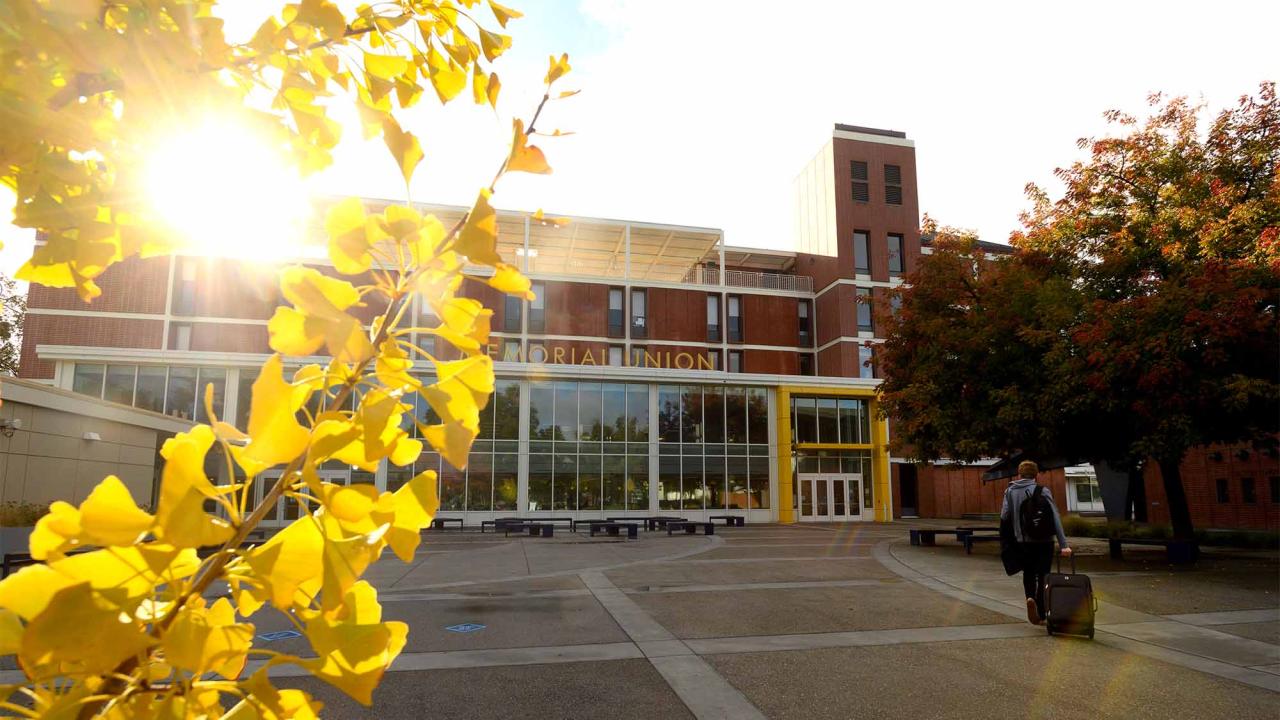UC Davis boasts some 24,000 trees from all around the world, and many are bursting into brilliant color.
Tree experts from the Arboretum and Public Garden shared their favorite places on campus to spot vibrant fall foliage.
“We generally get our best fall color from ginkgoes (Ginkgo biloba, golden yellow leaves) and Chinese pistaches (Pistacia chinensis, orange and red leaves),” said Emily Griswold, director of the GATEways Horticulture and Teaching Gardens. “The lipstick red fruits of the Formosan flame tree (Koelreuteria elegans subsp. formosana) also light up beautifully in the fall.”
Here’s where you can see them, and more:
- Lake Spafford: Visit for what Griswold called “one-stop leaf peeping,” as all three of those trees are on display.
- The footbridge west of Mrak Hall Drive is “draped with with lovely crimson foliage of Roger’s Red hybrid California grape (Vitis ‘Roger’s Red’),” Griswold said.
- Roessler Hall: The north side of the building has several Chinese pistaches and ginkgo bilobas.
- The courtyard between Melvin M. and Kathleen C. Green Hall (formerly known as the Life Sciences Building) and Briggs Hall has a collection of Formosan flame trees.
To find more trees around campus, use Campus Planning’s Public Tree Database, an interactive map that allows users to search for a specific type of tree all across campus (trees in the Arboretum are not included in the database).
Now is the time to get out and see the trees, Griswold said.
“November is typically when we get our peak color,” she said. “The Lake Spafford area is always lovely in the fall with several trees showing good color.”
For more information on the transformation that makes the spectacular colors pop, plant sciences professor Astrid Volder recently shared an explanation of why leaves change color when they do.
“When fall starts, the production of chlorophyll stops and chlorophyll that is present begins to break down,” she wrote on the Arboretum’s website. “This allows the other pigments, that were always there — like carotenoids, which make yellow and orange colors — to become more visible.”
Media Resources
Cody Kitaura is the editor of Dateline UC Davis and can be reached by email or at 530-752-1932.
